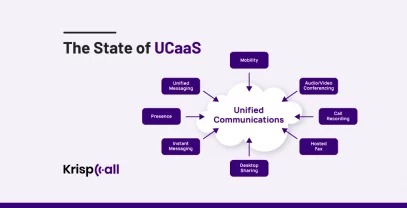In today’s subscription-based businesses, it’s important to understand key financial measures to help your business grow and succeed. Two of the most important measures are Annual Contract Value (ACV) and Annual Recurring Revenue (ARR).
Both of these give valuable insights into how well a company is doing financially and where its money is coming from. Still, they have different purposes and are calculated in different ways.
In this blog, you’ll explore the differences between ACV and ARR and how these metrics can boost your business strategy.
🔑 KEY Summary
- Annual Contract Value is a metric used to manage and compare your sales contracts, mainly when they differ in length and amount.
- Annual Recurring Revenue is a metric that determines how much money your company expects to make each year from subscriptions.
- Both ACV and ARR are useful for assessing a business’s financial health and revenue status, but they differ in their calculation methods and uses.
- ACV calculates the company’s yearly income from ongoing revenue streams, while ARR tracks the total revenue generated from contract signings.
- The formula to calculate ACV is ACV = Total contract value ÷ Number of years, and for multiple contracts: Average ACV = Total ACV of contracts ÷ Number of contracts.
- The formula to calculate ARR is ARR = Beginning of the year ARR + Gained ARR from new customers + Gained ARR from subscription upgrades – Lost ARR to subscription downgrades – Lost ARR to customer churning.
- Calculating ACV and ARR benefits business professionals, such as sales representatives, sales and marketing managers, and C-suite professionals.
What is Annual Contract Value (ACV)?
Annual Contract Value (ACV) is an important metric that helps determine a customer contract’s value by averaging and normalizing its worth over a year. With Annual Contract Value, businesses can assess the monetary value of customer accounts based on factors like pricing plans, monthly subscriptions, multi-year contracts, etc.
By calculating ACV in sales, businesses can focus on the recurring revenue generated by each account. However, it excludes factors like initial setup, administrative, or training fees.
How to use Annual Contract Value?
Annual Contract Value helps you manage and compare your sales contracts, mainly when they differ in length and amount. It helps to understand the value a customer’s contract brings yearly. ACV can be used for several reasons, such as:
- Comparing customers: Your customers’ contracts may differ in duration. It helps you arrange them and see them from the same perspective, making it easier to compare them fairly.
- Identifying valuable accounts: It will also help you identify which customers are bringing in the most money over time. With this information, you can decide where to focus your attention and resources to grow your business.
- Improving Service: By knowing the value of each customer, you can design tailored services and make them happy to continue doing business with you.
What is Annual Recurring Revenue (ARR)?
Annual Recurring Revenue (ACR) is a revenue metric that calculates how much steady money the businesses can expect to make each year. This metric covers all types of income, like subscriptions, maintenance fees, or other ongoing payments.
For companies relying on this kind of income, keeping track of ARR is crucial. It helps them understand their long-term financial status and plan for the future. Businesses can also see how well their products are doing in the market and whether their sales strategies are effective.
How to use Annual Recurring Revenue?
Annual Recurring Revenue helps you understand how much money your company expects to make each year from subscriptions. ARR can be used for several reasons, such as:
- Tracking revenue growth: It helps track your revenue performance from the subscription that changes over time. It also helps you identify if your company is growing financially or not.
- Evaluating strategies: The value of ARR helps you analyze the effectiveness of your sales tactics, customer retention efforts, and marketing strategies. The results attained from this analysis can guide you in making the necessary improvements.
- Forecasting revenue: It predicts future revenue by identifying changes that might occur from the customers renewing their subscriptions, buying more services (upsells), or canceling. Knowing these patterns beforehand will help you plan better customer satisfaction and retention strategies.
ACV Vs ARR: What’s the difference?
Both Annual Contract Value and Annual Recurring Revenue help determine a business’s financial/revenue status. However, they differ in terms of their computation methods and applications.
ACV measures the enterprise’s annual income from recurring revenue streams, whereas ARR measures the firm’s overall revenue from contract signings.
Here are the major differences between Annual Contract Value and Annual Recurring Revenue;
| Aspect | ACV (Annual Contract Value) | ARR (Annual Recurring Revenue) |
| Purpose | It is used to calculate the revenue value of a single, subscription-based contract. | It is used to calculate the revenue value of the entire company’s subscription-based contracts. |
| Calculation | It measures the annual contract value as an average dollar amount normalized across one year. | It measures the recurring revenue as the total dollar amount generated on an annual basis. |
| Formula | The formula for ACV may vary depending on the company. | The formula for ARR is standardized and almost the same across most companies. |
| Scope | It has limited scope if applied in isolation. For better results, use in conjunction with other metrics. | It has a huge scope in tracking revenue growth and making sales, marketing, and making business decisions. |
| Inclusion of charges | It may include initial or one-time contract charges. | It doesn’t include initial or one-time contract charges. |
Annual Contract Value Pros and Cons
Pros of Annual Contract Value
- Tracks sales and marketing initiatives: The calculation of the revenue that each customer generates helps businesses to track how effective sales and marketing campaigns are. This helps sales agents to quantify the best strategies for attracting and retaining customers.
- Improves budgeting decisions: ACV helps track the company’s annual revenue and figures trends over time. This information allows better planning and budgeting decisions by efficiently allocating resources.
- Fosters better customer retention management strategies: By identifying the true value of long-term contracts with clients, business reps are motivated to invest more in customer retention efforts. They can do this by providing excellent service.
- Provides a clear, straightforward metric: The ACV provides a simple metric that’s easy to explain to investors, employees, and customers. These metrics help to clearly picture the value of each contract and make it easier to communicate the company’s performance.
Cons of Annual Contract Value
- Time-consuming: This process may require extensive time to gather data and do analysis in order to calculate ACV accurately.
- Unaccountable for one-time purchases: Since ACV is based on recurring revenue, it will not accurately reflect the impact of past purchases. This means financial contributions from non-recurring sources may not be fully represented in ACV calculations.
- Partial measure of business success: Although ACV provides valuable insights, it only shows a partial picture of a company’s overall success. It should be aligned alongside other financial metrics in order to view a comprehensive view of the business’s performance.
- Neglect the changing market: ACV fails to consider the changing market and its impact on the subscription rates. This may lead to the possibility of inaccurate ACV calculations.
Annual Recurring Revenue Pros and Cons
Pros of Annual Recurring Revenue
- Stable and predictable income: Since ARR is a subscription-based model, it provides a steady flow of income for companies. Further, it allows businesses to create long-term financial plans and budgets through long-term consistent income.
- Higher valuation: The ARR strategy helps investors and stakeholders see the value of businesses more clearly. As the steady income stream increases trust in the company’s financial stability, the company becomes more appealing as an investment.
- Customer retention: The ARR subscription-based model helps to easily retain customers as they’ve already invested in your product or service. It further opens doors for upselling and cross-selling opportunities to existing clients, increasing revenue.
- Improved product development: As incomes are forecasted precisely, ARR allows more resources to be allocated to product development. When an investment is made to improve current products/services and create new ones, it ultimately boosts customer retention.
Cons of Annual Recurring Revenue
- Higher pressure to retain customers: If a company’s income is mainly focused on repeated purchases, there will be pressure to retain customers. As a result, the ARR will be significantly affected, and the pressure to retain customers might hinder innovation and experimentation.
- Difficulty adjusting pricing: Adjusting pricing under the ARR model can be challenging due to its steady and reliable revenue. Therefore, changes in pricing need to be made carefully to avoid disrupting the regular flow of income.
- Limited flexibility: ARR focuses on a stable income stream and hence that can be challenging for the business to quickly adapt to the market demands.This lack of flexibility can affect the company’s ability to innovate and respond to market changes effectively.
- Dependency on customer behavior: The value of ARR entirely depends on customers renewing their subscriptions or contracts. Therefore, any change in customer behavior, such as economic downturns or shifts in preferences, can adversely impact renewal rates and, as a result, affect the company’s revenue stability.
How do you calculate Annual Contract Value and Annual Recurring Revenue?
A different formula is used to calculate ACV and ARR.
How to calculate Annual Contract Value?
You can calculate ACV by dividing the total contract value by the number of years.
Here’s the formula:
ACV = Total contract value ÷ Number of years
For example:
Suppose the customer signs up for a 10-year annual subscription plan where the total value of the contract is $4500. The calculation will be:
ACV= $4500/ 5 = $900
But if a customer signs up for a 7-year, monthly subscription contract at $80 per month. The ACV formula to normalize a customer’s contract over a year is:
Annual subscription rate = $80 x 12 months = $960
Total contract value = $960 x 7 years = $6720
ACV = $6720 / 7 = $960
Likewise, to calculate ACV across multiple contracts, use this formula
Average ACV = Total ACV of contracts ÷ Number of contracts (you can use this formula in various methods)
How to calculate Annual Recurring Revenue?
To calculate ARR, the formula is ARR = Total annual revenue – Non-recurring revenue
This formula provides a general view of what your ARR looks like; however, it doesn’t consider changes in customer subscriptions, if any.
So, the standard formula to calculate ARR is:
ARR = Beginning of the year ARR + Gained ARR from new customers + Gained ARR from subscription upgrades – Lost ARR to subscription downgrades – Lost ARR to customer churning
For example:
Let’s suppose you have 500 annual customer subscription contracts on 1 January, and each contract yields $1200 in recurring revenue.
In such a case, everything will remain unchanged in the coming months, and there will be no non-recurring revenue. So, the ARR will equal the total annual revenue from last year or 500 x $1200 = $600,000.
Now, over the year, some changes have unfolded in your company :
- Gains 30 new $1200 customer subscriptions: (30 x $1200 = $36,000)
- 6 existing customers downgrade to $1000 subscriptions; loss count: (6 x $200 = 12,00)
- 7 existing customers canceled their subscriptions; loss count: (7 x $1200 = 8,400)
Now, to determine the ARR in real time put all the values in the given formula:
ARR = $600,000 + $36,000 – $1200 – $ 8,400 = $626,400 ( assuming there are no upsells in a year)
If your company mostly offers monthly subscriptions, you can calculate your MRR (monthly recurring revenue) using the following formula. Again, then multiply that result by 12 to attain your ARR value.
Who benefits from using ACV and ARR, and what is it for?
The ACV and ARR can be very beneficial for business professionals. Some business professionals gaining advantage using these metrics are:
- Sales representatives: Sales representatives can identify the customers who are most important and might need more attention. This helps them create retention strategies, approach customers to buy additional products/services, negotiate to extend contracts, and track annual sales.
- Sales/marketing managers: ACV and ARR can improve team operations. They help managers adjust training programs, monitor team performance, and make informed decisions to generate more profits.
- C-Suite professionals (like CEOs and CFOs): ARR and ACV are useful for high-level officials to compare the yearly income and evaluate the company valuation. It also helps professionals to decide to hire more staff, plan for future revenue, and to make large spending decisions.
Best practices to boost Annual Contract Value & Annual Recurring Revenue?
Some of the best practices to boost ACV (Annual Contract Value) and ARR (Annual Recurring Revenue) are:
- Bundled solutions: You can offer customers additional features or services that complement their current plan, increasing your ACV. However, you need to make sure that the solutions complement the features/services the customers already have and enhance their overall experience.
- Invest in customer service: Excellent customer service is a must, so you might need to consider outsourcing your customer service to make it even better. Better customer service results in happy and satisfied customers, enhancing retention rates and increasing both ACV and ARR.
- Revise your product price: When you raise the prices of the products/services, the ACV and ARR automatically increase. But you cannot just randomly increase the price. Instead, make sure the revised price is reasonable and doesn’t make your product look expensive compared to your competitors.
- Localize your price: If your product has a global customer base, you need to consider setting prices that are specific to each local market. Since different countries have different currencies and purchasing powers, localizing your pricing makes your product look attractive to international customers. This will eventually boost sales, hence your ACV and ARR.
Wrapping Up!
Both Annual Contract Value and Annual Recurring Revenue are important metrics that any company must measure to predict their sales and revenue value. ACV manages and compares sales contracts, whereas, ARR helps you understand how much money your company expects to make each year from subscriptions.
The ACV is beneficial while tracking sales and marketing initiatives, improving budgeting decisions, fostering customer retention strategies, etc. Likewise, the ARR is applicable for predicting a stable income, retaining customers, improving product development, etc.
The application of ACV and ARR benefits different business professionals, such as sales representatives, sales/marketing managers, C-suite professionals, etc. You might need to boost ACV and ARR for a better outcome by investing in customer service, revising product prices, localizing prices, etc.
FAQs
Why is ARR higher than ACV?
ARR is higher than ACV because ARR measures the total recurring revenue generated by all customer contracts, while ACV focuses on the average annual revenue per customer contract.
Why use ARR instead of revenue?
ARR is mostly used instead of total revenue as it provides more accurate information about a company’s long-term revenue potential. However, the total revenue focuses on one-time sales, which may fluctuate from period to period.
Also, ARR focuses only on recurring income from subscription-based contracts, making it a more reliable metric for assessing a company’s financial status and stability over time.
What is the difference between Annual Contract Value (ACV) and Total Contract Value (TCV)?
The difference between ACV and TCV is tabulated below:
| Aspect | ACV (Annual Contract Value) | TCV (Total Contract Value) |
| Measurement | It measures the annualized value of a single contract, usually a subscription, over a year. | It measures the total value of a contract over its entire term, which includes all fees and charges. |
| Timeframe | It focuses only on value generated within a single year. | It focuses on the entire duration of the contract, even multiple years if applicable. |
| Inclusion of Charges | This may include an initial or one-time charge, entirely depending on the company’s formula. | This may include all charges associated with the contract, such as setup fees, recurring fees, etc. |
When should you use the Annual Contract Value and Annual Recurring Revenue?
You can use ACV to evaluate the revenue value generated by individual contracts, especially in subscription-based businesses. It can also be used to evaluate the effectiveness of sales and marketing initiatives, improve budgeting decisions, and develop customer retention strategies.
Conversely, you can use ARR to measure the total revenue generated from all subscription-based contracts. It helps you gain a clear picture of the company’s revenue growth over time, aids in financial planning and evaluates its long-term financial stability.





